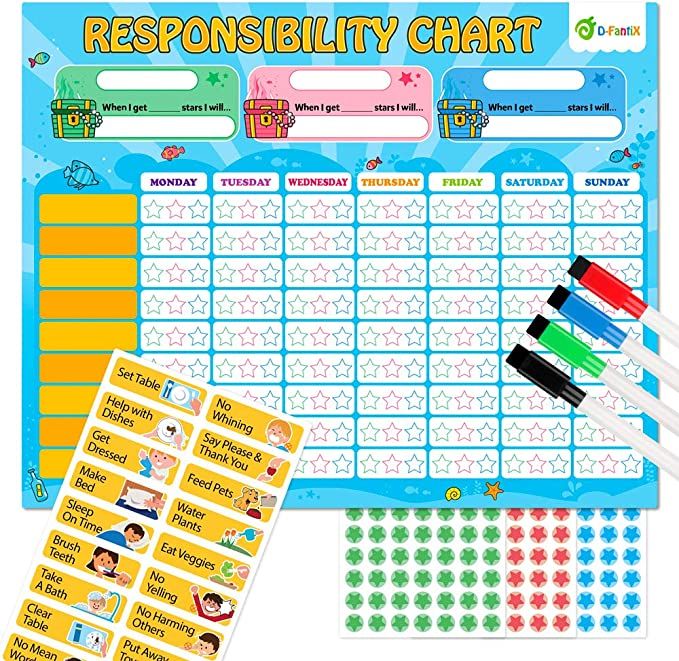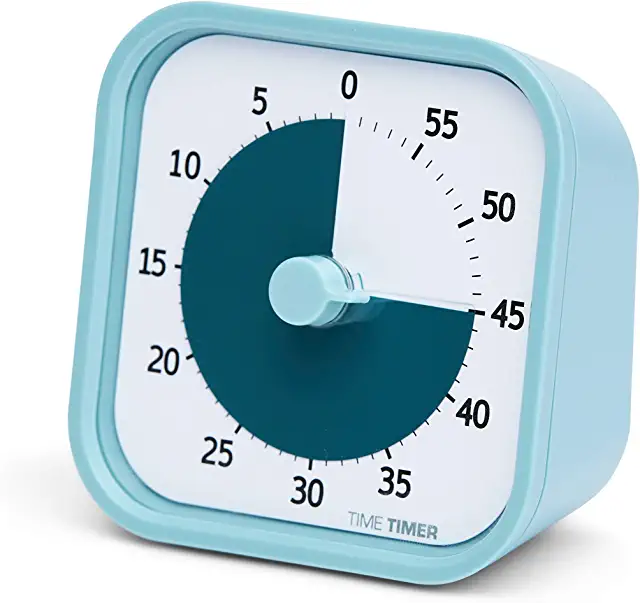Earning charts are a great way to build accountability for responsibilities such as household chores. However, be sure that your chart follows a positive reinforcement model. That is, the child performs a desirable behavior (completing a chore) and receives a reward (reinforcement) which encourages continuation of the positive behavior. We recommend something like earning screen time, or allowance for purchasing a toy. Equally as important, your chart should offer multiple opportunities for success. For example, earning fifty cents per chore would be a better model than earning two dollars if all chores are completed. As with visual schedules, adding a picture with each chore promotes independence. There are lots of responsibility charts for kids on the market; feel free to browse and find the format that best suits your family!
Top 3 Tools for Creating Structure at Home
Kids (and adults!) feel safe and secure when they know what to expect from a situation. These three tools will help bring structure to your little learner’s day, which in turn can help them be more successful with following directions and decrease emotional meltdown moments.
1. Visual Schedules
Most children benefit from a reliable routine, so try to follow the same timing and sequence for after school to-dos such as snack, dinner time, and completing homework. Having a transparent, concrete schedule posted somewhere in your home can help kiddos know where they are in that sequence and anticipate what’s coming next. For younger children and those with learning differences, including pictures next to each item on the schedule can be a huge help in allowing them to reference the schedule more independently. If your kiddos have several different extracurriculars throughout the week, a Monday-Friday schedule with separate days might be preferred over a single “daily routine” schedule.


